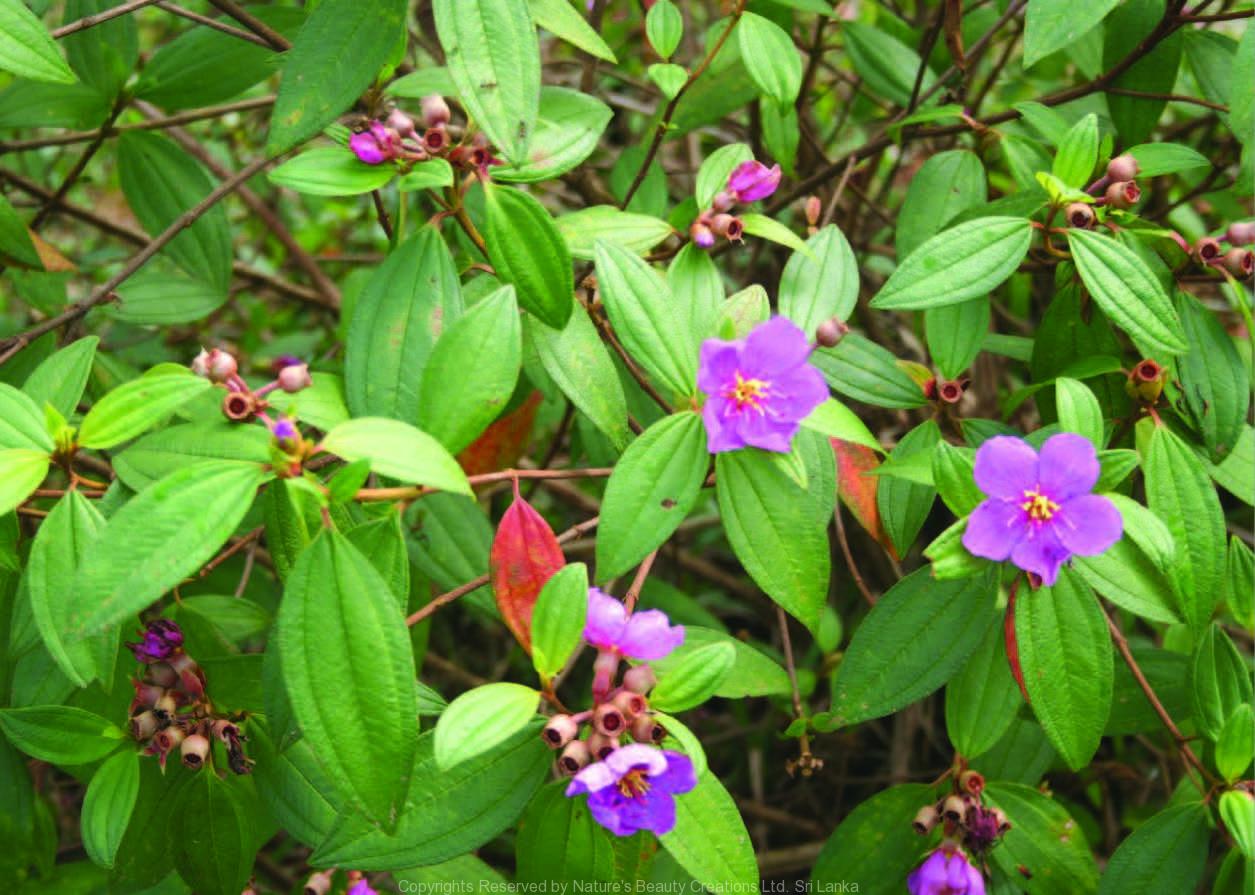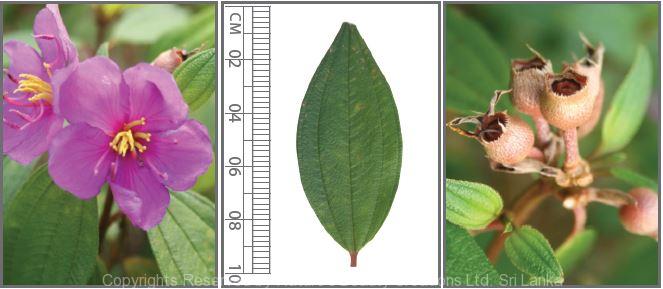

Traditional Knowledge
Useful plant parts :
Young shoot and leaf
Uses in traditional medicine :
- Decoction of the young shoots with leaves is taken for indigestion
Scientific Research
Chemical constituents:
Flavonoids: naringenin, quercetin, kaempferol and its derivatives, triterpenes: ursolic and asiatic acids, α-amyrin, amides: auranamide, patriscabratine; phenolic compound: ellagic acid, hydrolysable tannins: nobotanins B, G, H and J and malabathrins B–D from leaves and flowers
Bioactivity :
Aqueous and methanol extracts of leaves: antinociceptive, anti-inflammatory, antipyretic, antidiarrhoeal, anticoagulant, antiproliferative, antioxidative, antihyperlipidaemic, antidiabetic, hepatoprotective, antiulcer
Clinical:
References : Choudhury, M. D. C. et al., (2011), Antimicrobial Activity of Melastoma malabathricum L., Biological and Environmental Sciences, 7(1), 76-78. Faravani, M. et al.,(2008), Assessment of Allelopathic Potential of Melastoma malabathricum L. on Radish raphanus sativus L. and Barnyard Grass (Echinochloacrus-galli), Notulae Botanicae Horti Agrobotanici, 36(2), 54-60. Kamisan, F. H. et al, (2013), Hepatoprotective activity of methanol extract of Melastoma malabathricum leaf in rats, J Acupunct Meridian Stud, 6(1), 52-5. Kumar, V. et al., (2013), Anti-diabetic, anti-oxidant and anti-hyperlipidemic activities of Melastoma malabathricum Linn. leaves in streptozotocin induced diabetic rats, BMC Complement Altern Med, 13(1), 222. Manicam, C. et al., (2010), In vitro anticoagulant activities of Melastoma malabathricum Linn. aqueous leaf extract: A preliminary novel finding, Journal of Medicinal Plants Research, 4(14), 1464-1472. Sirat, H. M. et al., (2010), Amides, triterpene and flavonoids from the leaves of Melastoma malabathricum L, J Nat Med, 64(4), 492-5. Sunilson, J. A. J. et al., (2009), Antidiarrhoeal Activity of Leaves of Melastoma malabathricum Linn., Indian Journal of Pharmaceutical Sciences, 71(6), 691–695. Susanti, D. et al., (2007), Antioxidant and cytotoxic flavonoids from the flowers of Melastoma malabathricum L., Food Chemistry, 103(3), 710–716. Wong, K. C. et al., (2011), Chemical constituents and antibacterial activity of Melastoma malabathricum L., Natural Product Research, 1, 1. Yoshida, T. et al., (1992), Dimeric hydrolysable tannins from Melastoma malabathricum, The International Journal of Plant Biochemistry, 31(8), 2829–2833. Zabidi, Z. et al., (2012), Antiulcer activity of methanol extract of Melastoma malabathricum leaves in rats, Med Princ Pract, 21(5), 501-3. Zakaria, Z. A. et al., (2006), Antinociceptive, anti-inflammatory and antipyretic properties of Melastoma malabathricum leaves aqueous extract in experimental animals, Canadian Journal of Physiology and Pharmacology, 84(12), 1291-1299. Zakaria, Z. A. et al., (2011), In vitro antiproliferative and antioxidant activities and total phenolic contents of the extracts of Melastoma malabathricum leaves, J Acupunct Meridian Stud, 4(4), 248-56.
Copyrights Reserved By
Natures Beauty Creations




